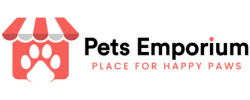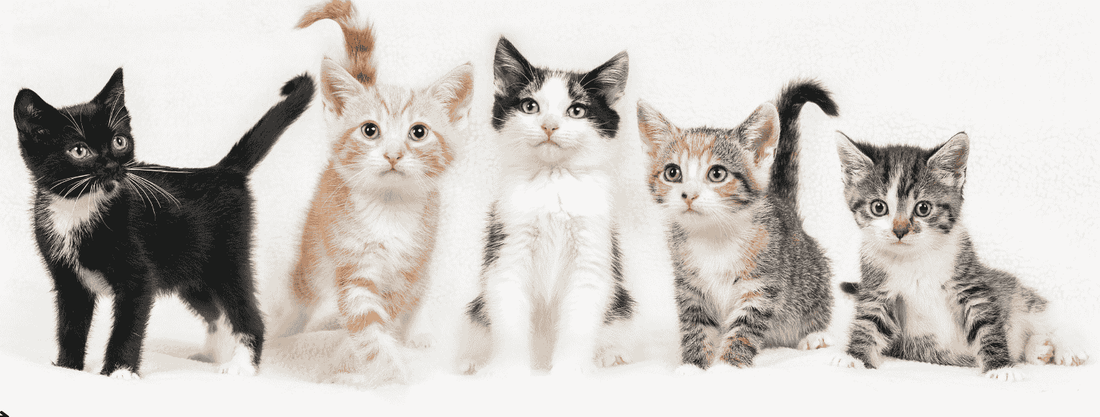Welcoming a kitten into your home is a journey full of joy and responsibility. The foundation of their health is proper nutrition, yet many first-time pet parents unknowingly commit feeding mistakes that can impact growth, digestion, and overall well-being. Pets Emporium, Pakistan’s #1 online pet store offering high-quality pet food and accessories under one roof, is committed to helping you and your new furry companion flourish. This guide will walk you through the most common pitfalls and show you how to avoid them, ensuring your kitten grows strong, happy, and healthy.
Understanding Kitten Nutritional Needs
It is interesting to know that kittens develop fast, and their body requires an appropriate combination of nutrients to stay healthy and active. A good diet helps to maintain healthy bones, good eyesight and a healthy immune system. A healthy diet must contain protein to develop muscles, healthy fats to provide energy, and vitamins or minerals for overall development.
Providing clean, fresh water is very important. Do not feed your pet with food which is meant for adult cats. This is because it might not contain the nutrients that this pet needs during its growing stage. Small, frequent meals during the day are helpful to keep them energetic. With the proper nutrition at an early age, you are establishing the path to a healthy and happy life. The appropriate nutrition today will result in a healthier, more energetic cat tomorrow.
Significant Signs You Are Feeding Your Kitten Correctly
A healthy pet is always active, energetic and playful. Their coats appear shiny and smooth. This is a clear sign that they are receiving the appropriate nutrients. Another positive indicator is the steady weight gain because they develop rapidly within the first year.
A healthy diet is also visible in their bright, clear eyes and clean ears. The absence of diarrhea and constipation and regular healthy bowel movements is a sign that their diet is going great. A pet which eats properly at mealtime and has plenty of energy during the day is probably being fed properly.
Keep observing your pet and make sure they are energetic and their body is in good condition. Healthy feeding will make them grow up strong, active and lead a healthy and vibrant life.
Common Feeding Mistakes to Avoid for First-Time Pet Owners
There are common feeding mistakes that pet owners should avoid when serving the pet for the first time. A few common mistakes to mention are:
-
Overfeeding or Underfeeding Your Pet
-
Feeding Cow’s Milk Instead of Formula
-
Ignoring the Importance of a Feeding Schedule
-
Switching Foods Too Quickly
-
Not Providing Fresh Water at All Times
-
Using Dog Food as a Substitute
-
Neglecting Quality Ingredients and Nutrients
Let’s explain each one of the above pointers in detail below:
1. Overfeeding or Underfeeding
A lot of new pet owners underestimate the required portion size of their pet. Overfeeding can be extremely harmful, causing obesity issues. It is essential to always consult your vet specialist regarding the feeding quantity. They always instruct you according to the weight, age and activity level of the pet. Adjust the portion frequently in three different meal sets.
2. Feeding Cow’s Milk Instead of Formula
It’s a fact that cow milk is not suitable for them and may result in digestive disturbance, such as diarrhea. In case your pet is too young to take solid food, feed it with a formula. This will help them to be served with the proper nutrients for better growth and development.
3. Ignoring the Importance of a Feeding Schedule
It is always a better option to prepare a proper feeding schedule for your pet. Regular meals can control digestion, keep energy levels consistent and avoid over-eating. You should feed your pet several small meals per day. Once it starts to grow, reduce the frequency of those meals. Regularity will develop good eating habits and will make you conscious of changes in appetite or health.
4. Switching Foods Too Quickly
Suddenly switching the diet may cause stomach upset and lead to diarrhea or vomiting. Never give new food suddenly. You should add it gradually in 7-10 days by mixing larger quantities of the new food with the old. This gradual change enables the digestive system to adjust easily without causing any stress to the body.
5. Not Providing Fresh Water at All Times
Your pets should always have access to fresh water. Dehydration may cause urinary tract problems and kidney problems in the future. Put clean water bowls in places that are easy to reach and change them every day. In case your pet is not willing, a pet water fountain should be used to make them drink.
6. Using Dog Food as a Substitute
Dog food does not contain the necessary nutrients required by kittens, especially taurine, which promotes vision, heart health and growth. Occasional feeding with dog food will lead to nutritional deficiency in the long run. Never feed them on regular cat food in the first year of their life.
7. Neglecting Quality Ingredients and Nutrients
Not all foods are created equal. Some contain low-quality fillers or artificial additives. Look for ingredients like high-quality proteins (chicken, turkey), DHA for brain and vision health, prebiotics and probiotics for digestion, and grain-free options if allergies are a concern. Look for the items that offer probiotics, taurine, and no GMOs or preservatives. Such food options are ideal for supporting developing immune systems and sensitive digestions.
Planning a Feeding Schedule for Your Growing Kitten
These pets are fast-growing, and their little stomachs require frequent, nutritious meals to stay energetic. During the first weeks (0-4 weeks), they are bottle-fed at an interval of 2-4 hours even at night. Between 4 and 8 weeks, they move to soft and wet food, taking 45 small meals a day.
Most kittens do well on 4 evenly spaced meals, and by 6 months, most of them are down to 3 meals a day. Make sure that they have fresh water with their food and select quality food that helps them grow healthy.
These pets do not have a large energy storage capacity, so they are happiest, playful, and growing strong when fed regularly. The correct schedule will not only feed their bodies, but their future as well.
Best Time to Serve Kitten with Adult Cat Food
They require special nutritional requirements during their early stages of development. At about 12 months of age, their growth is slow, and their energy needs are also changing. This is the right time when most of them can safely be changed to adult cat food.
Big breeds such as Maine Coons, can take up to 18 months to shift to adult food items. Make the transition slowly over 7-10 days by adding more adult food to their kitten food to prevent stomach upsets.
Early switching may also deny them of vital nutrients such as higher protein and fat that are required for development. Waiting until the right time will help you facilitate an easy transition and maintain your cat healthy, happy, and full of life.
Conclusion
Ensuring your kitten thrives starts with avoiding common feeding mistakes. This includes choosing age-appropriate diets and establishing routines, to monitoring growth and hygiene. At Pets Emporium, Pakistan’s top pet supply store, you’ll find quality food options plus expert advice to support every step of kittenhood. By staying informed and attentive, you’ll nurture a happy, healthy cat companion well into adulthood.
Frequently Asked Questions
How often should I feed my kitten?
Those that are under 8 weeks should get every 3–4 hours. Older ones (8–12 weeks) should get 3–4 meals per day. Adjust portions as they grow.
Can I feed adult cat food temporarily?
It’s not recommended! Adult formulas lack crucial nutrients which they need, like higher protein, fats, and essential vitamins/amino acids.
Is wet food better than dry for kittens?
Wet food offers hydration and is easier to chew, but a mix of both works well—ensure enough water is always available.
How do I tell if my pet is overweight or underweight?
Feel the ribs (should be palpable, not visible), observe waist definition, and track weight weekly to monitor growth consistency.

